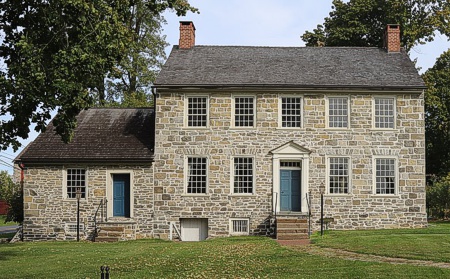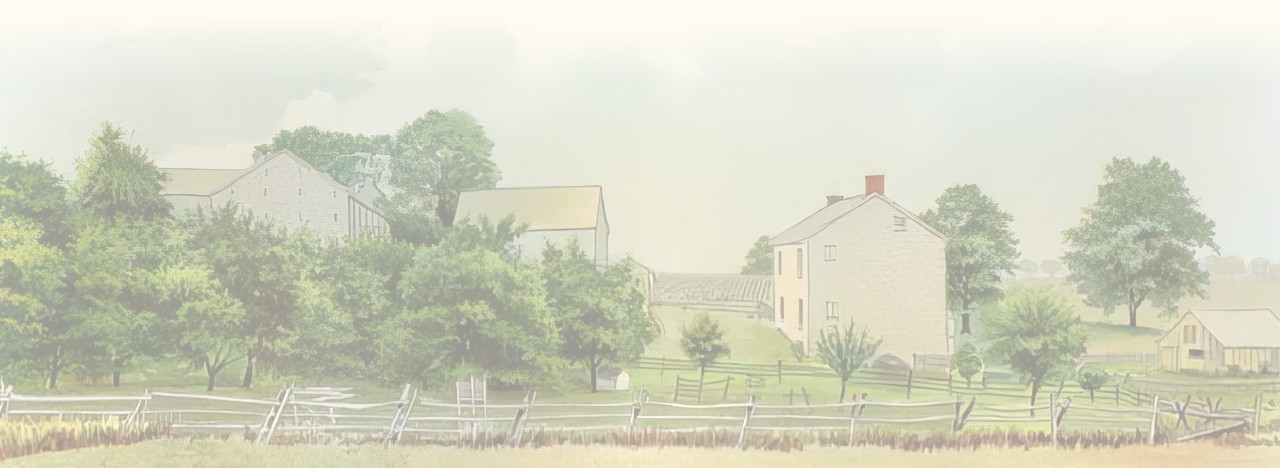History of East Allen Township
 Craig's Scotch-Irish Settlement was established in 1728, and was the oldest permanent settlement in Northampton County along the Catasauqua Creek. In 1730, they started meeting as a congregation in their homes. The Scotch-Irish Presbyterians of Allen Township established a church, in 1731, made of logs. The present church (now God's Missionary Church) was built in 1813. It is the 3rd church that was built by the Presbyterians. East Allen Township was established in 1842 from what was Allen Township. With the new township boundaries, the settlement is now located in East Allen Township at 4965 Nor-Bath Blvd. in Northampton, PA 18067 (between Bath and Northampton).
Craig's Scotch-Irish Settlement was established in 1728, and was the oldest permanent settlement in Northampton County along the Catasauqua Creek. In 1730, they started meeting as a congregation in their homes. The Scotch-Irish Presbyterians of Allen Township established a church, in 1731, made of logs. The present church (now God's Missionary Church) was built in 1813. It is the 3rd church that was built by the Presbyterians. East Allen Township was established in 1842 from what was Allen Township. With the new township boundaries, the settlement is now located in East Allen Township at 4965 Nor-Bath Blvd. in Northampton, PA 18067 (between Bath and Northampton).
At the start of the Revolutionary War, John Ralston was the auditor of depreciations, George Palmer was coroner, William McNair and Jacob Horner were justices of the peace. Neigal Gray and John Ralston attended the provincial conference held in Carpenter's Hall. Ralston and Robert Lattimore were members of the Pennsylvania General Assembly. Arthur Lattimore, Neigal Gray, and John Hays, Jr. were on the Standing Committee of Correspondence.
Thomas Craig and John Craig served as the area's Lieutenants. Sub Lt.s were Arthur Lattimore and John Hays. John Ralston served as paymaster. William McNair was an agent for Forfeited Properties. Robert Lattimore was a Commissioner to collect clothing. Arthur Lattimore was a Justice of the Courts of General Quarter Sessions and of Common Pleas. John Hays, Jr. was a member of the Commission of Observation.
Northampton County was formed in 1752, which included the settlement that was already 24 years old. Many of them held the first county offices in Easton. William Craig and J. Lattimore were Prothonotary and Clerks of Quarter Sessions. Built in 1757, Fort Ralston is located near Bath and was built to protect settlers from Indian attacks during the French and Indian War. The fort is near the present intersection of Route 329 and Airport Road in a farmer's field. It was attached to the barn, which is quite damaged.
The first recorded burial in Horner's Cemetery was in 1745, but a baby in the oldest section makes it the oldest cemetery in Northampton County. Horner's Cemetery contains the graves of many of the region's earliest inhabitants, including 21 veterans from four U.S. wars. There is a stone for General Robert Brown, a lieutenant colonel in George Washington's Flying Camp. He also served in Pennsylvania's State Assembly and then the U.S. Congress after his service in the American Revolutionary War. Brown also owned the Washington’s Friendship Tree.
Some of the notables were George Palmer, Deputy Surveyor-General of Pennsylvania. He was the Penn families’ surveyor. Palmer Township was named in his honor for his accuracy. He settled disputes on boundary lines between states.
Another man of interested was and Surgeon-General Dr. Matthew McHenry. He served on the ship Montgomery during the Revolutionary War. James Ralston also laid out the town of Bath and Gen. William Lattimore owned the first house there. Hugh Wilson was the founder of Northampton.
All four are buried at Horner's Cemetery.
The cemetery has been restored by local members of the community, starting in 2008. The Horner Cemetery Historical Society was formed in 2011 and thery just celebrated their 285th Anniversary. All are welcomed to visit and /or join.



